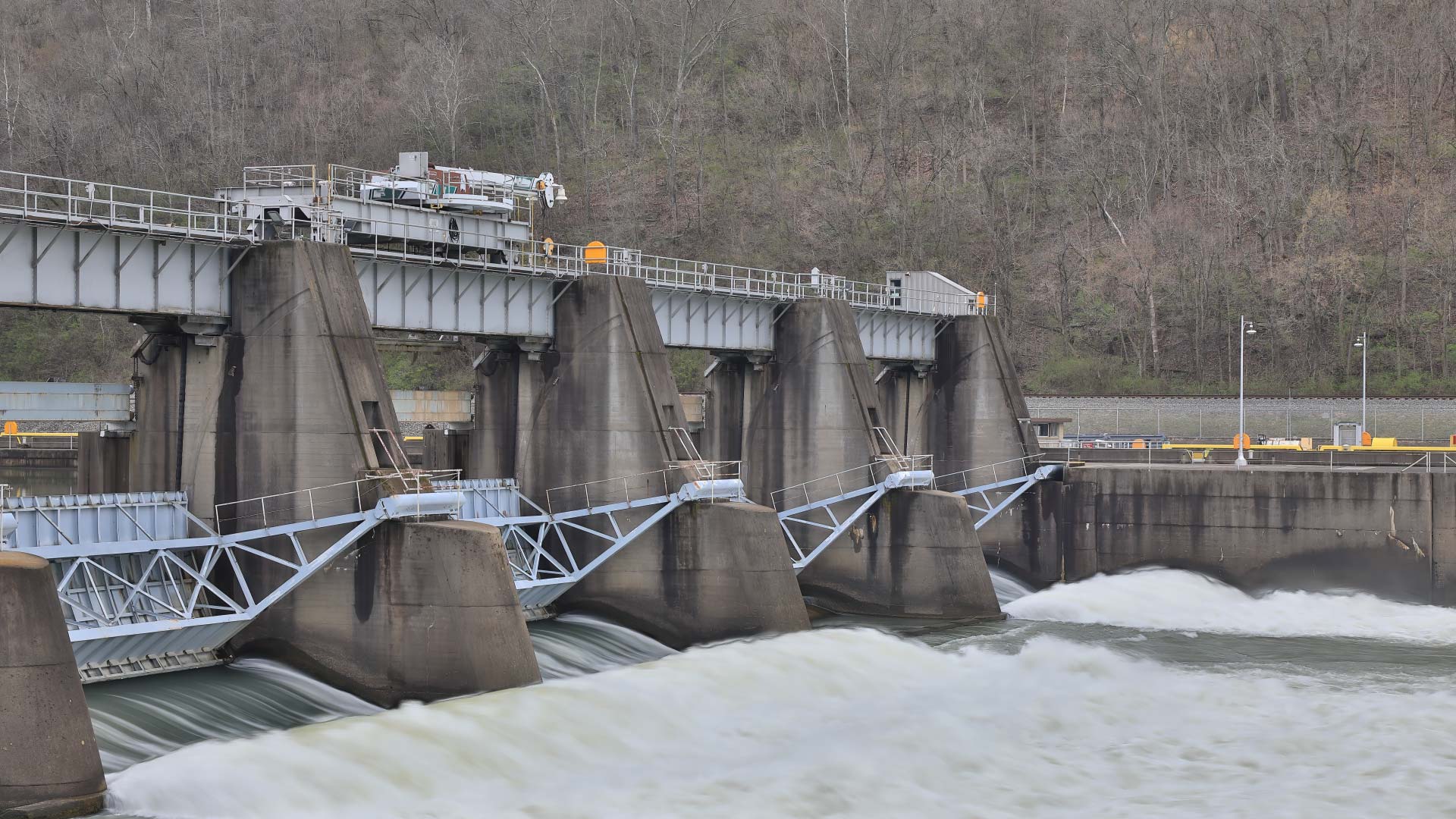- A Historic Ribbon-Cutting Ceremony
- Honoring Congressman John P. Murtha
- Decades of Planning and Construction
- Enhancing Commercial Navigation on the Monongahela River
- Congressman John P. Murtha's Legacy
- The Future of Navigation on the Monongahela River
- Conclusion: A Monumental Achievement for the Pittsburgh District
A Historic Ribbon-Cutting Ceremony
The U.S. Army Corps of Engineers Pittsburgh District marked a significant milestone on August 28, 2024, with the completion and renaming of the John P. Murtha Locks and Dam on the Monongahela River in Monessen, Pennsylvania. The ribbon-cutting ceremony was the culmination of over 20 years of construction work aimed at modernizing the facility, a project decades in the making.
The ribbon-cutting ceremony at the John P. Murtha Locks and Dam was a momentous occasion attended by several prominent figures. Key participants included Chelsea Jones, U.S. Army Corps of Engineers Pittsburgh District’s river ranger; Kirk McWilliams, area engineer for the district; Pennsylvania Lieutenant Governor Austin Davis; John Murtha Jr., son of the late Congressman John P. Murtha; Col. Nicholas Melin, Pittsburgh District commander; Conor Lamb, chair of the Port of Pittsburgh Commission; Alan Nogy, chief of navigation for the Pittsburgh District; and Keith Millstine, the lockmaster.
Honoring Congressman John P. Murtha
The ceremony also served as a dedication to the late Congressman John P. Murtha, a Vietnam War veteran and a dedicated public servant. Originally built in 1932, the Monongahela River Locks and Dam 4 was recently renamed in honor of Murtha, recognizing his significant contributions to the region and the nation. The new lock chamber, which measures an impressive 720 feet in length and 84 feet in width, replaces the previous, smaller chamber and is designed to support increased commercial navigation throughout the region.
Decades of Planning and Construction
A Long Journey to Completion
The completion of the John P. Murtha Locks and Dam marks the end of a journey that began 30 years ago with the initial planning phase. Over the past two decades, the U.S. Army Corps of Engineers worked tirelessly to modernize the facility. Despite the extensive construction efforts, the navigation facility remained operational without any unscheduled closures—a testament to the dedication and expertise of the Pittsburgh District team.
Advanced Engineering and Construction Efforts
The construction of the new lock chamber and control tower involved 14 separate contracts, 250,000 cubic yards of concrete, and 13 million pounds of reinforced steel. Additionally, 1.1 million cubic yards of soil were dredged from the river to deepen the navigation channel, ensuring the facility could meet the demands of modern commerce.
Enhancing Commercial Navigation on the Monongahela River
Expanded Capacity and Advanced Technology
The new lock chamber significantly enhances the facility’s capacity to support commercial navigation, accommodating up to nine standard barges or six jumbo barges in a single pass. This expansion is crucial for the transportation of large quantities of commodities such as petroleum, grain, coal, and other aggregates along the river. By improving the lock’s efficiency, the project is expected to generate over $200 million in estimated annual benefits for the region and the nation.
The Importance of Waterway Infrastructure
The Pittsburgh District operates 23 locks and dams on the Allegheny, Monongahela, and Ohio rivers, playing a vital role in the region’s economy. According to Pennsylvania Lieutenant Governor Austin Davis, who spoke at the ceremony, this network of locks and dams saves shippers and consumers $4 billion annually in transportation costs compared to road and rail alternatives.
Congressman John P. Murtha’s Legacy
A Leader Dedicated to Public Service
Congressman John P. Murtha’s legacy extends far beyond his military service. After serving in the Vietnam War, where he was awarded the Bronze Star with Combat “V” device, two Purple Hearts, and the Vietnamese Cross of Gallantry, Murtha transitioned to a political career. He was elected to represent Pennsylvania’s 12th Congressional District in the U.S. House of Representatives, where he played a pivotal role in securing resources for infrastructure projects like the John P. Murtha Locks and Dam.
Impact on Western Pennsylvania and Beyond
Murtha’s influence on western Pennsylvania’s economy is undeniable. Following the devastating 1977 flood in Johnstown, Pennsylvania, Murtha worked to diversify the region’s industries, which had been heavily reliant on the steel sector. His efforts helped stabilize the economy and opened new opportunities for the Monongahela River as a key inland navigation route.
The Future of Navigation on the Monongahela River
Ensuring Reliable Navigation for the Next Century
The completion of the new lock chamber is a significant step forward in ensuring reliable navigation on the lower Monongahela River for the next century. The facility’s innovative technology, including the potential for remote operation, positions it as a critical component of the region’s infrastructure.
Continued Commitment to Infrastructure Development
The Pittsburgh District’s work on the Monongahela River is part of a broader multi-billion-dollar initiative known as the Lower Monongahela River Construction Project. This project also involves work on two other navigation facilities along the river, which handles the highest volume of commercial traffic in the Monongahela River navigation system.
Conclusion: A Monumental Achievement for the Pittsburgh District
The successful completion of the John P. Murtha Locks and Dam is a monumental achievement for the Pittsburgh District. It not only honors the legacy of Congressman John P. Murtha but also ensures that the Monongahela River will continue to serve as a vital artery for commerce and transportation in the region and the nation. As Col. Nicholas Melin aptly stated, “The new lock will ensure reliable navigation on the lower Monongahela River for the next century, incorporating innovative technology that paves the way for potential remote operation of the lock in the future.”
By investing in this critical infrastructure, the Pittsburgh District has laid the foundation for continued economic growth and stability in western Pennsylvania and beyond.
